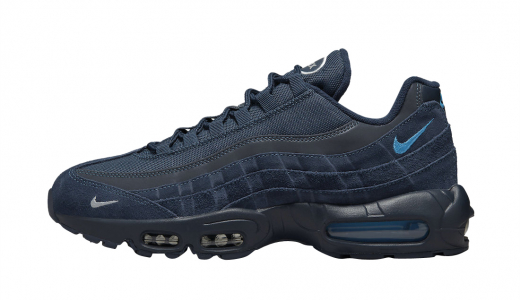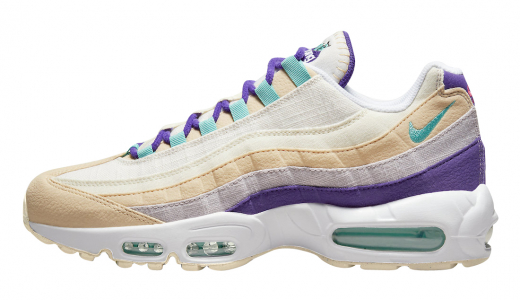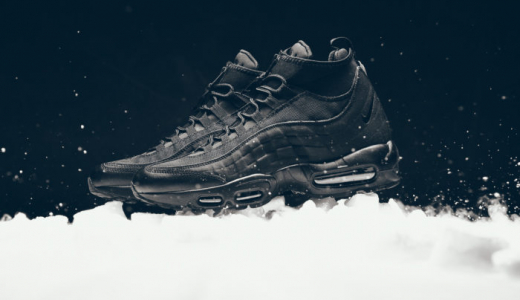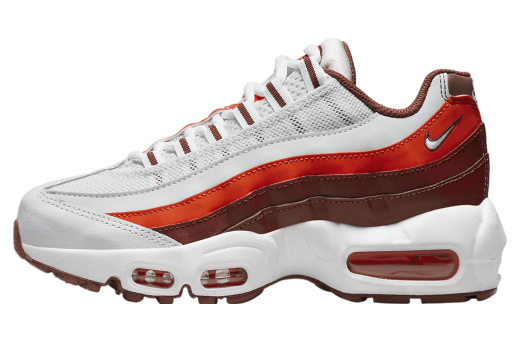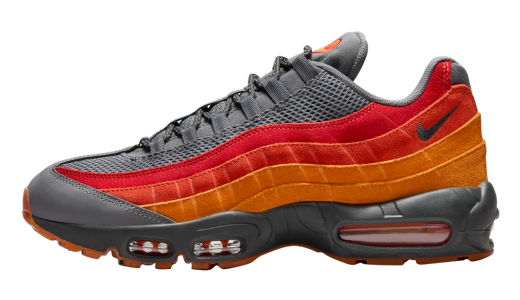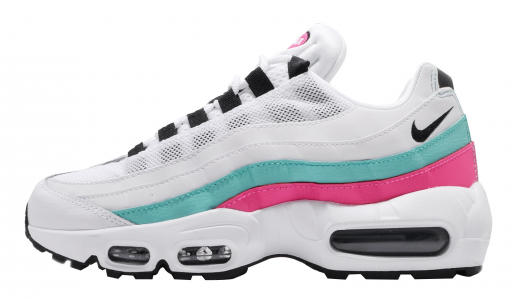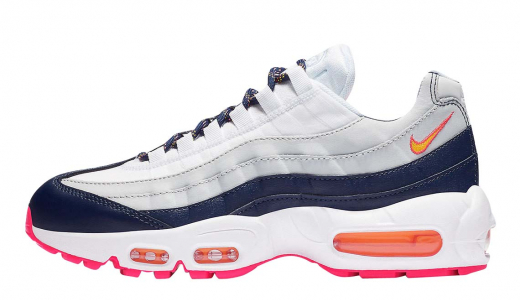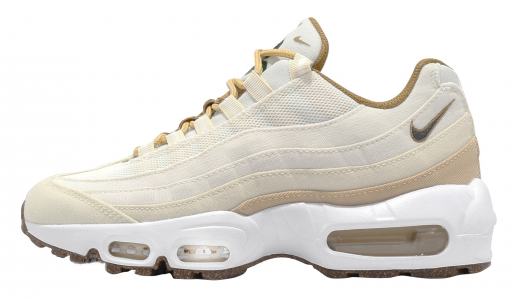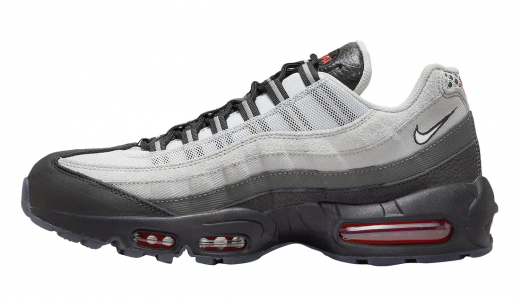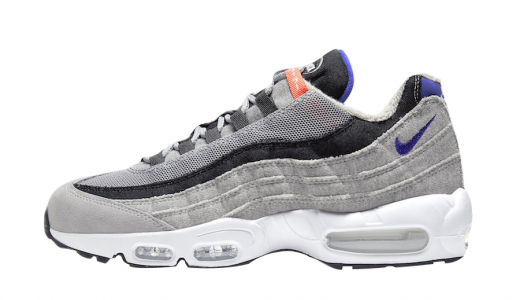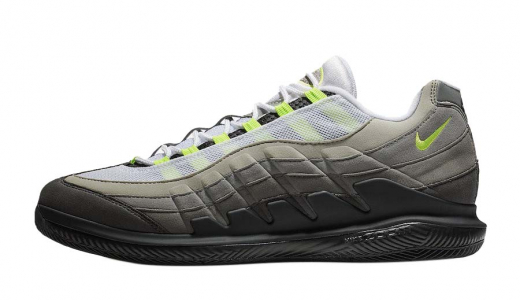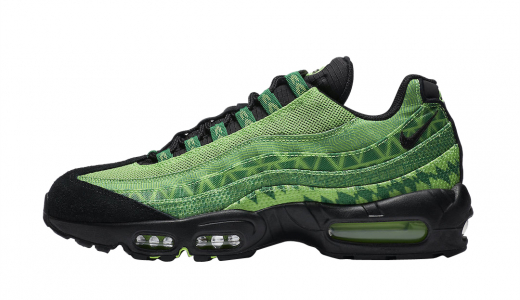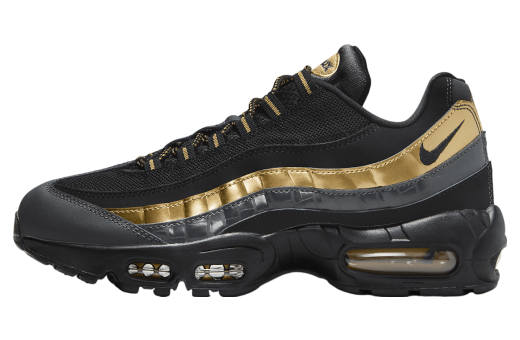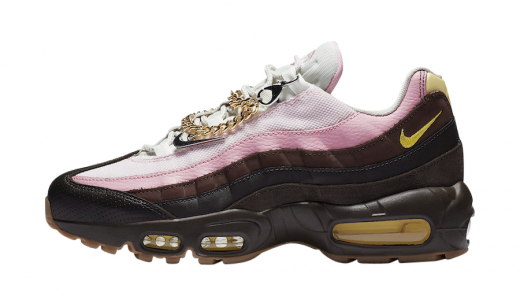Nike Air Max 95
The Nike Air Max 95 is an iconic sneaker that revolutionized the athletic footwear industry with its innovative design and advanced technology. Introduced in 1995, the Air Max 95 was designed by Sergio Lozano, who drew inspiration from human anatomy to create its distinctive look. The shoe features a unique gradient style with multiple layers and a visible air cushioning system in the midsole, which was a groundbreaking advancement at the time. This model marked a significant evolution in the Air Max line by incorporating forefoot air units and a more aggressive, futuristic aesthetic compared to its predecessors. The use of a combination of synthetic leather, mesh, and suede materials provided durability, breathability, and comfort, making it a versatile choice for both athletic endeavors and casual wear.
Since its launch, the Nike Air Max 95 has enjoyed enduring popularity and has been embraced by various subcultures, from hip-hop communities to streetwear enthusiasts. Its bold and dynamic design has made it a frequent canvas for numerous collaborations and limited editions, helping it maintain a fresh and relevant presence in the sneaker market. Beyond its visual appeal, the Air Max 95's performance-driven features, such as enhanced cushioning and support, have solidified its reputation as a reliable and stylish option for athletes and sneakerheads alike. Whether worn as a fashion statement or for functional athletic support, the Nike Air Max 95 continues to be a beloved and influential silhouette in the ever-evolving world of footwear.
History of Nike Air Max 95
The story of the Nike Air Max 95 begins in the mid-1990s, during a period of significant transformation and innovation in footwear design. The Nike Air Max series itself had already established a reputation for breaking boundaries with visible air cushioning, first introduced in the Air Max 1 back in 1987. However, the Air Max 95 brought a new level of audacity and creativity to the series, becoming one of the most iconic and influential sneakers in history.
### The Birth of Nike Air Max 95
The journey of the Air Max 95 started in 1994 when Nike's then-innovative designer, Sergio Lozano, took on the challenge of creating a new and revolutionary shoe. Unlike previous designs, Lozano's inspiration came from an unusual source – human anatomy. He envisioned a shoe that mirrored the human body's structure, aiming to combine both aesthetic appeal and functionality.
Lozano drew the design elements from various anatomical features. The layered upper of the shoe resembled muscle fibers and flesh, the midsole mirrored the curvature of the spine, and the graduated suede panels on the upper mimicked the ribs. This biologically-inspired approach was groundbreaking and was destined to set the Air Max 95 apart from anything that had come before.
### Design and Technological Innovations
One of the main technological advancements in the Air Max 95 was the inclusion of visible Air units in both the heel and, for the first time, the forefoot. Previous models had visible Air only in the heel, so this dual-Air system provided better cushioning, shock absorption, and overall comfort. The shoe also introduced new construction techniques, including a layered, gradient upper and a lacing system that offered a custom fit.
The original color scheme was another bold move. Dubbed the "Neon" colorway, it featured an eye-catching gradient of gray on the upper, accentuated by neon yellow accents. This striking contrast not only highlighted the intricate design but also made it instantly recognizable. The choice of black for the sole and midsole gave it a street-ready toughness, further enhancing its bold, aggressive look.
Lozano also focused on performance. The Air Max 95's midsole utilized Phylon, a lighter, more flexible type of foam. The upper was made from a combination of mesh and synthetic materials, ensuring breathability and durability. This made the Air Max 95 as functional on the track as it was stylish on the street.
### Cultural Impact and Popularity
Upon its release in 1995, the Air Max 95 was met with mixed reactions. Some critics found its radical design too outrageous, while others appreciated its ingenuity and boldness. Importantly, the sneaker quickly gained a passionate following among sneaker enthusiasts, athletes, and various subcultures.
The Air Max 95 found a special place in hip-hop and urban culture, with its futuristic design resonating with the avant-garde sensibilities of the mid-'90s. It became a staple on the streets of major cities like New York, Los Angeles, and London, often seen on the feet of rappers, graffiti artists, and fashion-forward individuals. This cultural adoption was crucial in turning the Air Max 95 into an icon.
Further cementing its legacy, the Air Max 95 found a place in the sports domain, particularly in running. The comfort, support, and advanced cushioning made it a favorite among runners. Its success on the track and the street proved Nike's strategy of blending performance and style was a winning formula.
### Evolution and Collaborations
Over the years, the Air Max 95 has gone through numerous iterations and colorways, each adding to its rich heritage. Nike has consistently revisited and updated the model, experimenting with new materials, colors, and technologies. Some notable variations include the Air Max 95 Ultra, which features a streamlined construction for a lighter feel, and the Air Max 95 SE, which incorporates sustainable materials.
Collaborations have also played a significant role in the Air Max 95's enduring appeal. High-profile partnerships with designers, artists, and brands have produced unique, limited-edition versions that keep the model fresh and relevant. Notable collaborators include luxury designer Riccardo Tisci, U.K. grime artist Skepta, and Japanese brand atmos. Each collaboration brings a new perspective to the classic silhouette, adding layers of storytelling and desirability.
### Regional Popularity and Global Influence
Different regions have embraced the Air Max 95 in various ways, further illustrating its universal appeal. In Japan, for example, the sneaker became a cultural phenomenon known as "Max-Kei." Japanese sneakerheads appreciated the intricate design and technological innovations, often queuing for hours to get their hands on the latest releases. The model became a symbol of sneaker culture in Japan, influencing fashion and streetwear trends.
In Europe, particularly the U.K., the Air Max 95 garnered a cult following. Known colloquially as “110s” (in reference to their original £110 price tag), they became synonymous with British street culture, especially within the grime and garage music scenes. The sneaker’s rugged design and bold aesthetics resonated strongly with the youth, making it a fixture in urban fashion.
### Enduring Legacy
The Nike Air Max 95 has undoubtedly carved its place in the annals of sneaker history. Its revolutionary design philosophy, blending human anatomy with footwear technology, was ahead of its time and continues to inspire designers today. The dual visible Air units, gradient colorways, and muscle-inspired upper have become iconic features in the sneaker world.
Its cultural impact extends beyond fashion and sports, influencing music, art, and street culture globally. The Air Max 95’s ability to stay relevant through decades of changing trends speaks to its timeless design and adaptability. It’s more than just a shoe; it’s a cultural artifact that captures the spirit of innovation and rebellion.
### Technological Milestones and Sustainability
With the ongoing progression of sneaker technology, the Air Max 95 has seen several advancements that push the boundaries of comfort, performance, and sustainability. Nike has introduced versions of the Air Max 95 that incorporate Flyknit technology, providing a more flexible and lighter upper. This innovation has not only improved the shoe's performance but also its environmental footprint, as Flyknit significantly reduces waste in the manufacturing process.
Another significant step forward has been the use of sustainable materials. The Air Max 95 has seen releases under Nike’s Move to Zero initiative, aiming to reduce carbon emissions and waste. These eco-friendly versions use recycled polyester, Nike Grind material, and other sustainable components, offering environmentally conscious consumers a guilt-free option without compromising on the iconic design and functionality.
### Future Prospects
As we look to the future, the Air Max 95 is poised to continue its legacy of innovation and cultural influence. Nike’s ongoing commitment to sustainability and technological advancement ensures that future iterations of the Air Max 95 will likely blend cutting-edge materials and ecology-conscious approaches.
The sneaker industry is ever-evolving, but the cultural footprint of the Air Max 95 remains indelible. With new collaborations, technological enhancements, and sustainable practices, the Air Max 95 is set to resonate with future generations of sneaker enthusiasts, athletes, and fashionistas alike.
### Conclusion
The Nike Air Max 95 stands as a testament to innovative design, cultural relevance, and the seamless integration of fashion with functionality. From its revolutionary inception, inspired by human anatomy, to its role in defining street culture across continents, the Air Max 95 continues to be a beacon of creativity and influence in the sneaker world.
Its journey from a radical design concept to a global icon is a story of risk-taking, adaptability, and enduring appeal. The Nike Air Max 95 is not merely a product of its time but a versatile, evolving masterpiece that will undoubtedly continue to impact the realms of sports, fashion, and culture for years to come.
